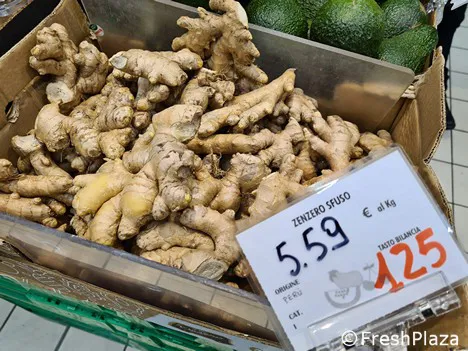The volumes of ginger available on the market are not enough to meet the demand, but prices are still competitive. In this period of the year, most of the product comes from China, Brazil and Peru. Italian ginger, on the other hand, is still very limited in terms of volumes. Two days ago, in a large-scale retail chain in northern Italy, bulk ginger from Peru was sold at € 5.59 per kilo. Organic ginger, also from Peru and packaged in Italy, was around twice as expensive (€9.93/kg).

With regard to markets, during the lockdown there was a shortage of product caused both by logistical problems and because the producing countries were exporting less. Things got back into balance in the summer and autumn, but prices are still high.
The fact that in order to grow ginger you have to start with the rhizome led to a higher demand and a higher price, which resulted in a greater interest in selling as many rhizomes as possible in the producing countries.
These quantities would have been far too high 10 years ago, but in the last couple of years the demand has increased tenfold and the Italian market has also started to ask for more product. Ginger is seen as a vegetable with high nutraceutical properties, especially as a powerful anti-inflammatory supplement.
